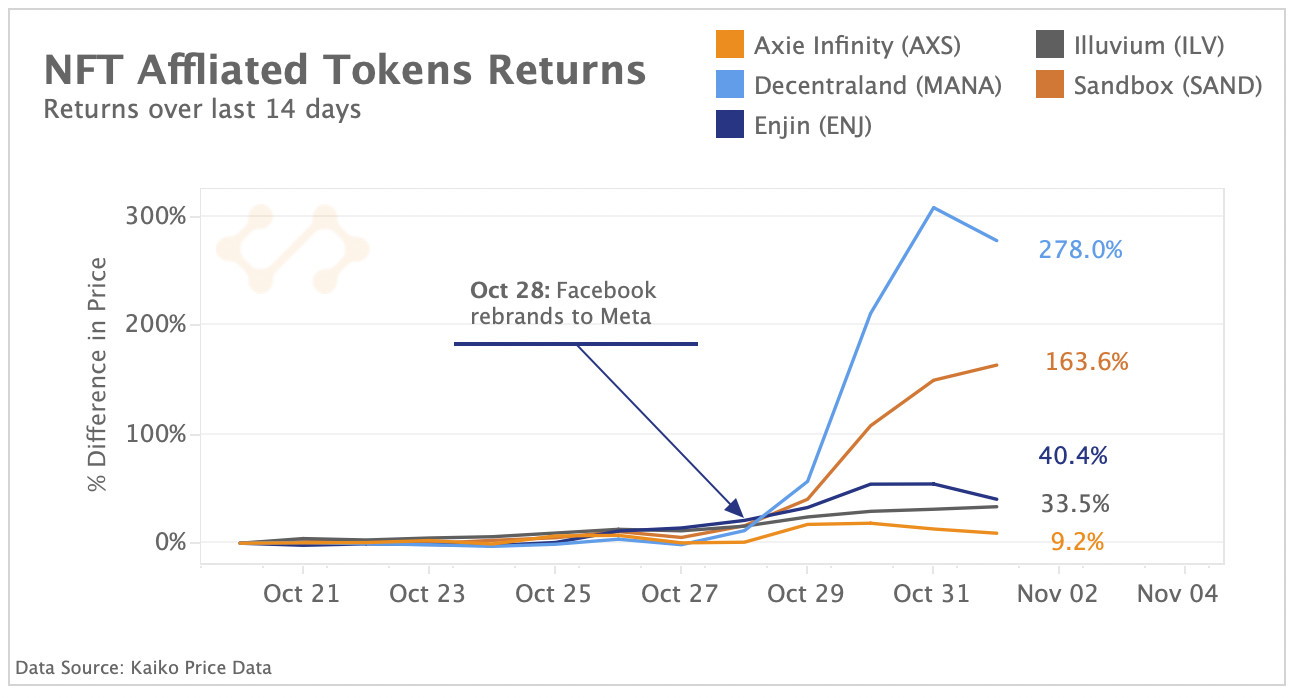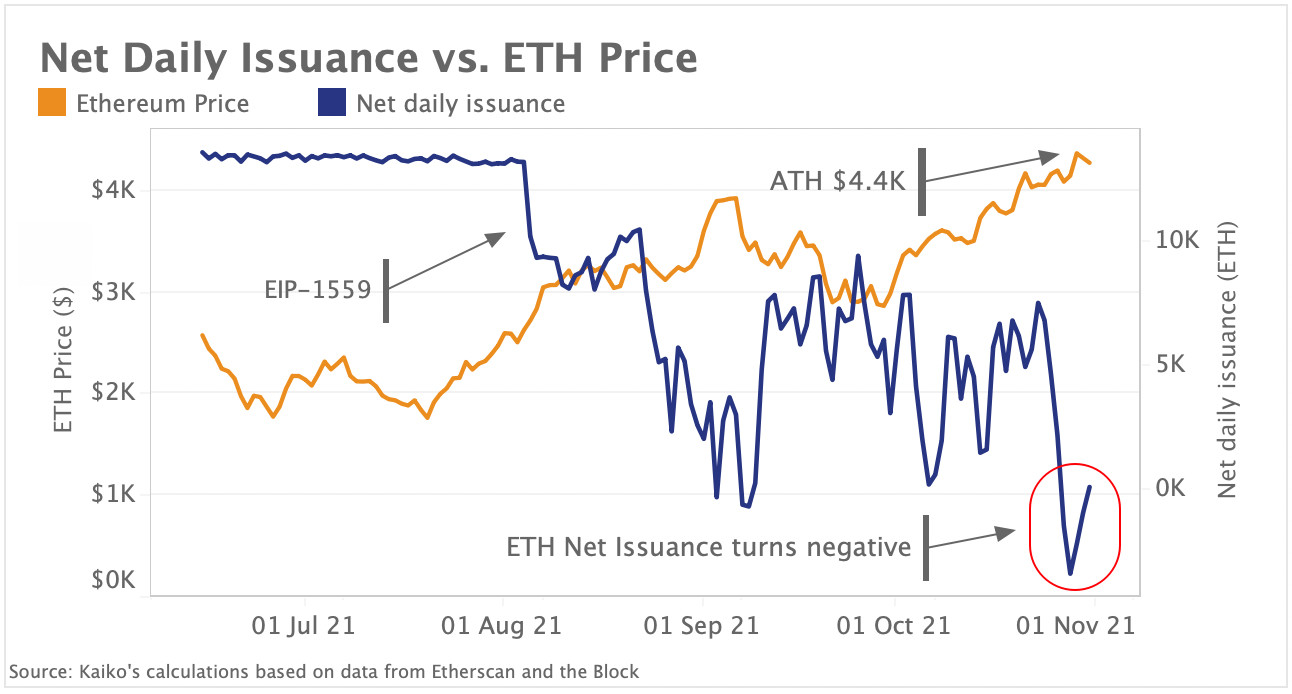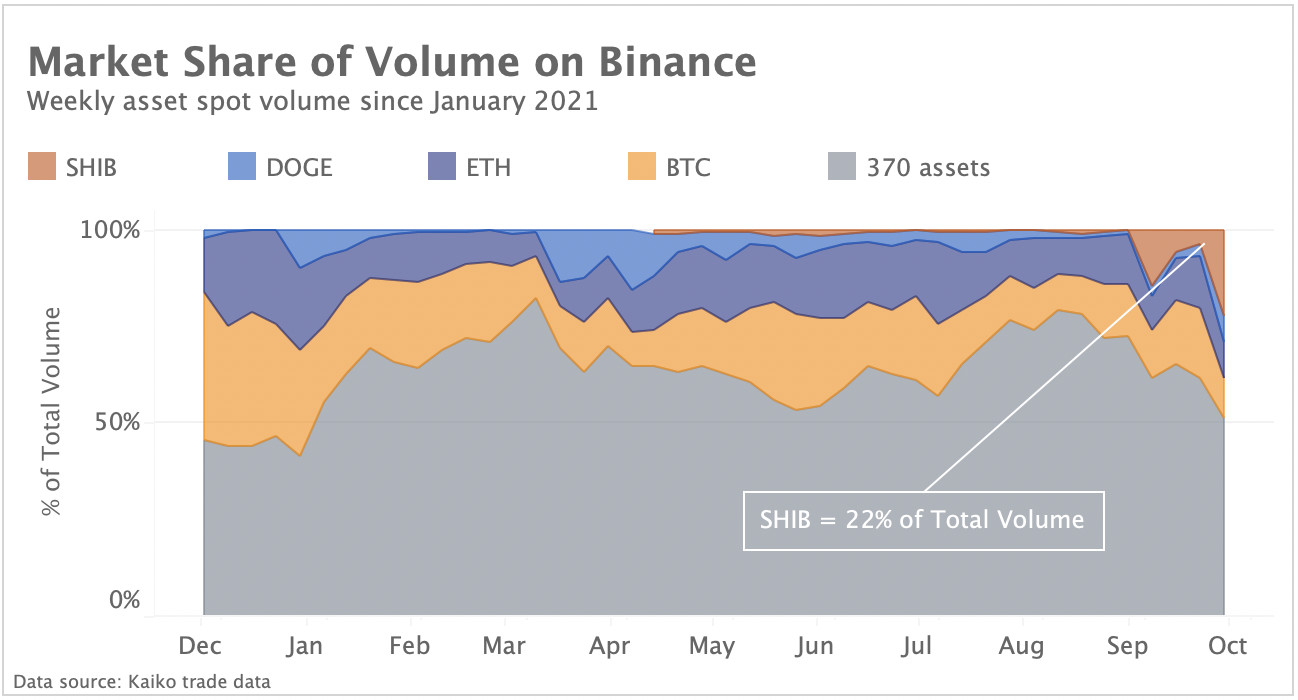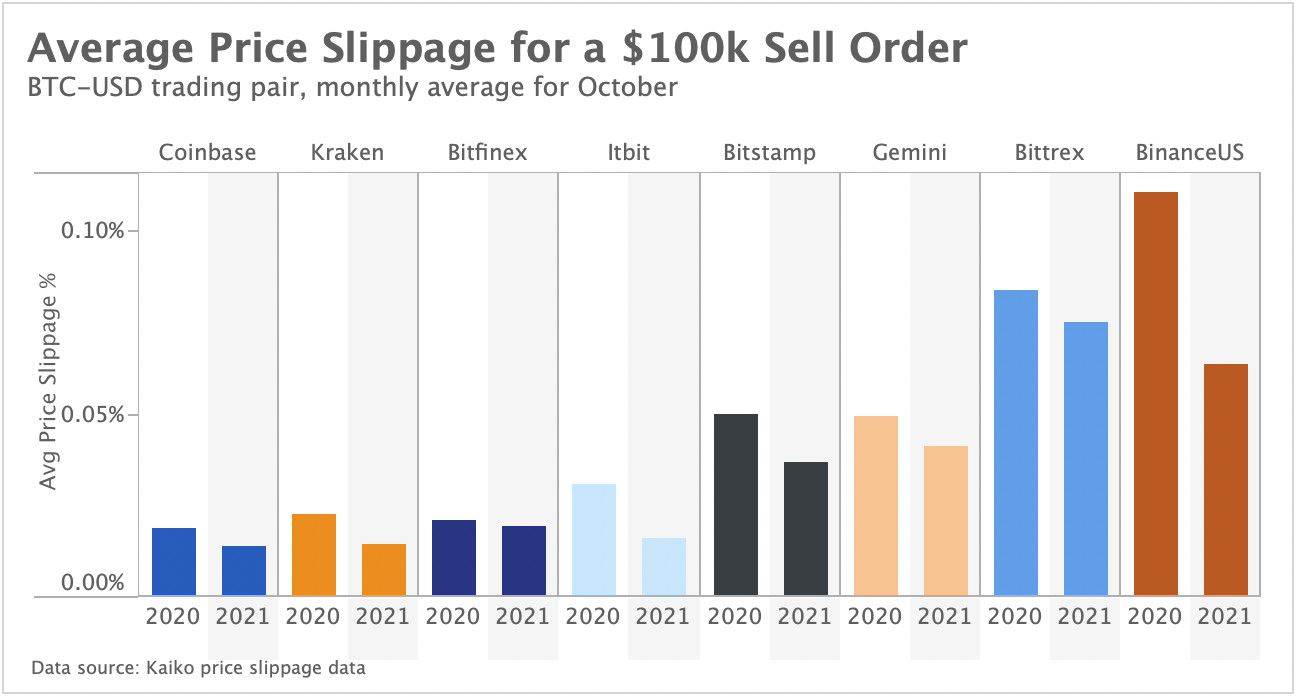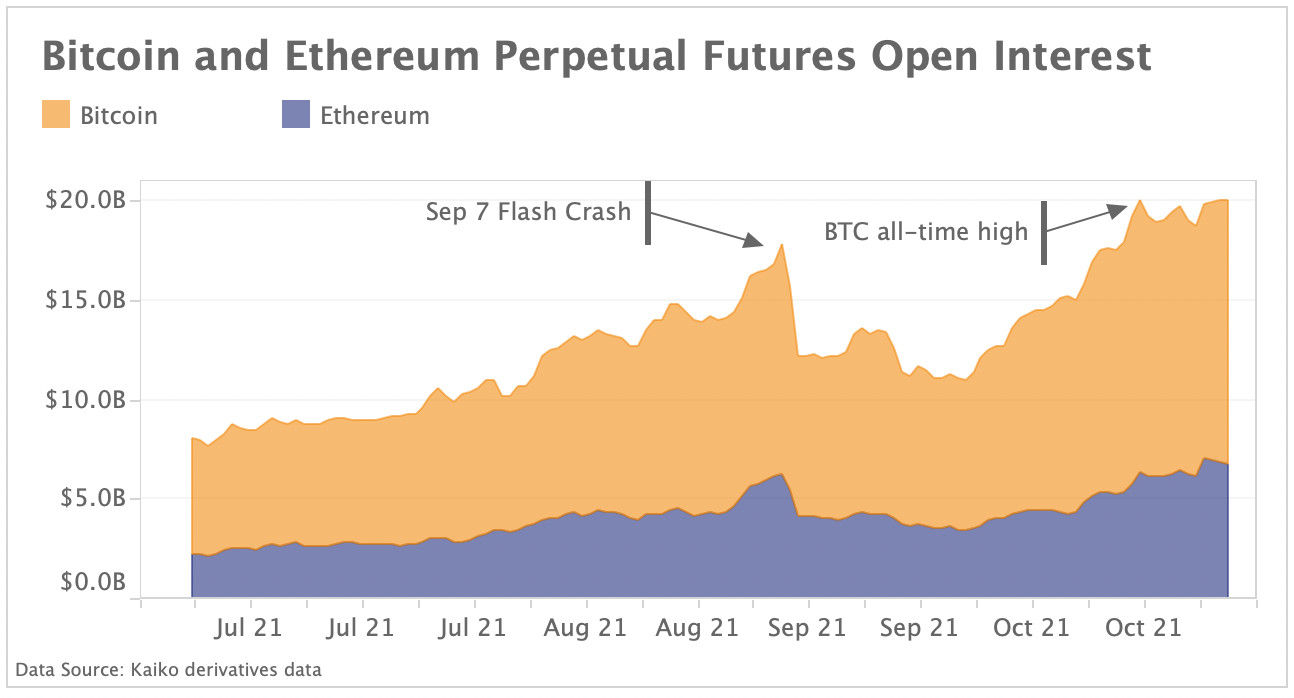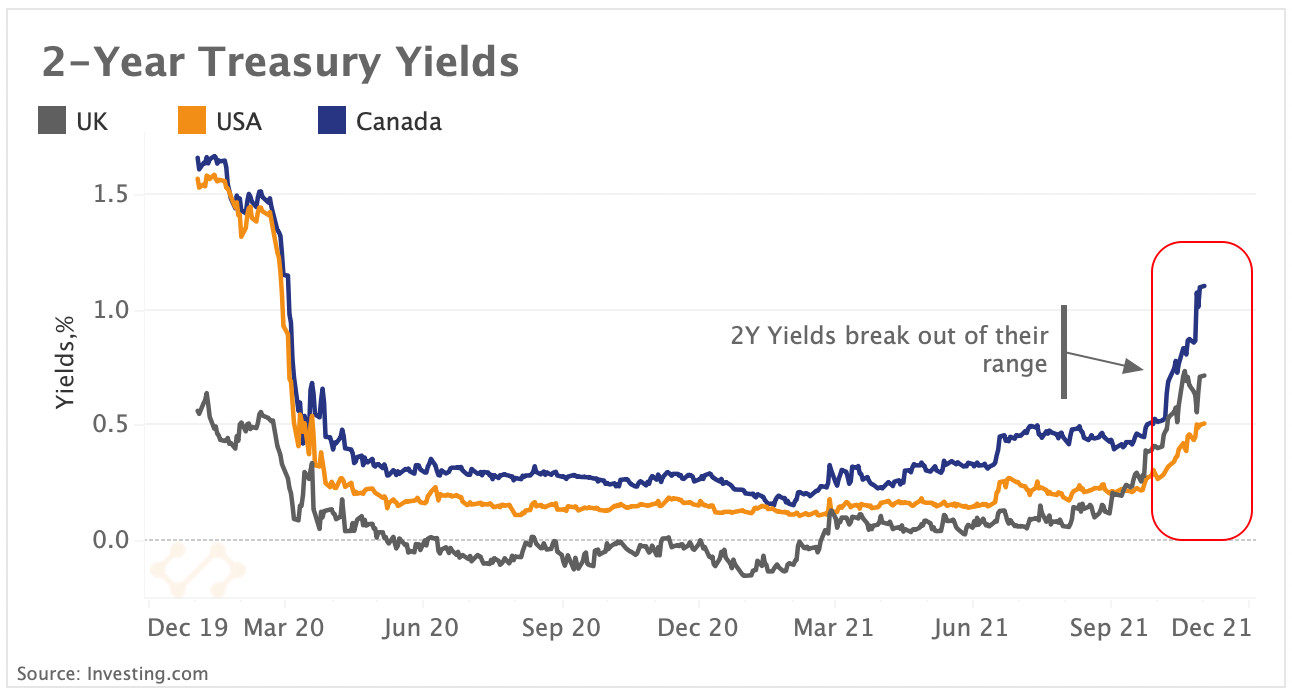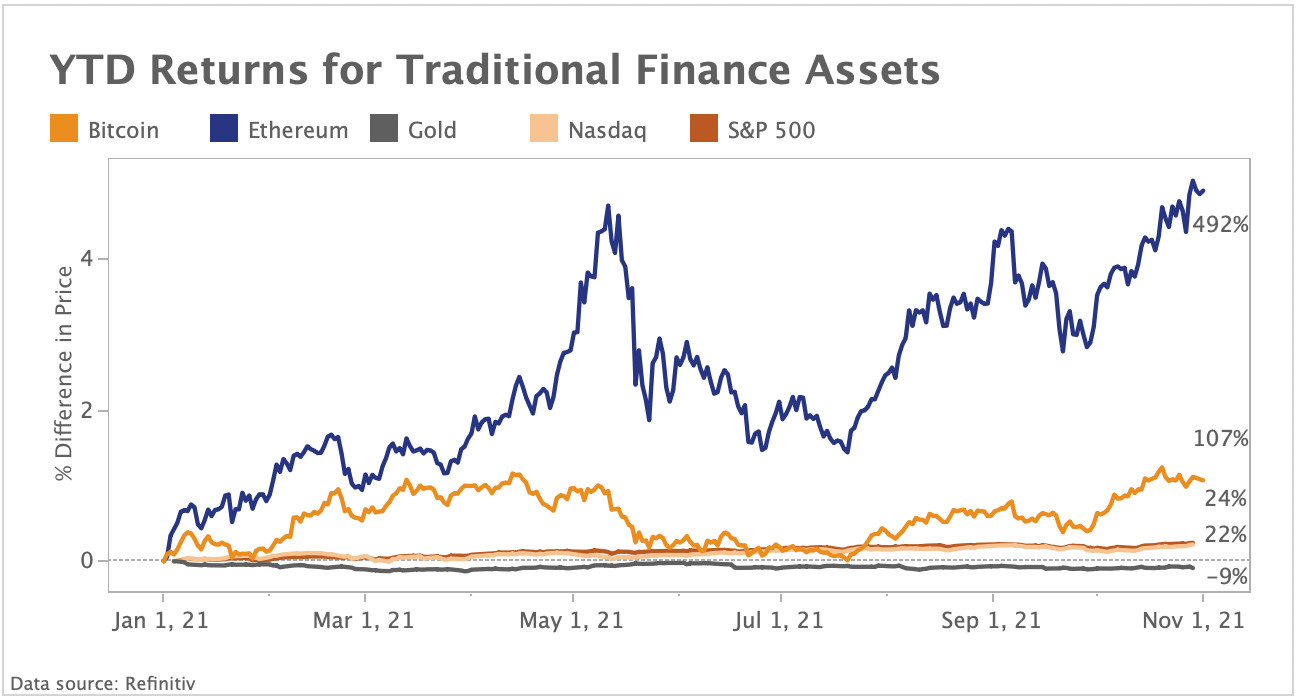A summarizing review of what has been happening at the crypto markets of the past week. A look at trending sectors, liquidity, volatility, spreads and more. The weekly report in cooperation with market data provider Kaiko.
The last 7 days in cryptocurrency markets:
- Price Movements: Ethereum, meme coins, and NFT-affiliated coins were last week's biggest winners.
- Volume Dynamics: More than $44b in volume was executed for meme coin SHIB on Binance last week.
- Order Book Liquidity: Since October 2020, price slippage has fallen on every major fiat exchange.
- Derivatives: Traders increasingly prefer USD(T)-margined contracts compared with coin-margined.
- Macro Trends: 2-year treasury yields are surging as markets price in the effects of tapering.
Meme coins steal the show
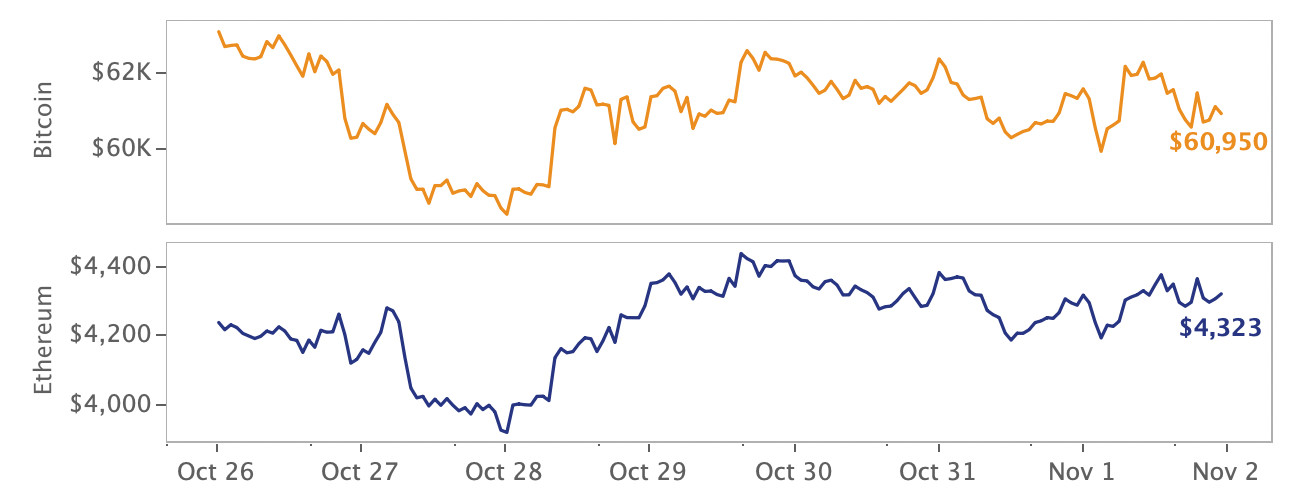
Altcoins took a back seat for most of October as Bitcoin broke new all time highs after the successful launch of the first U.S. BTC-based ETF. Ethereum too regained momentum in the final days of the month, soaring past previous highs of $4.4k as anticipation mounts around the upcoming Ethereum 2.0 upgrade. Yet, the biggest headlines last week didn't come from ETH's all time highs; rather, from meme coins Shiba Inu (SHIB) and Dogecoin (DOGE), which have again generated frenzied levels of activity.
SHIB is up +750% YTD and is now the 9th largest crypto asset by market cap. There has been no apparent shift in fundamentals to explain surging prices beyond strong activity among the SHIB community. In other non-meme news, Nigeria launched a Central Bank Digital Currency, mastercard is bringing crypto payments to the masses, and the SEC may soon have the authority to regulate stablecoins.
Meta boosts NFT-affiliated tokens
Facebooks big "Meta" rebrand proved to be an extremely bullish signal for several of the biggest NFT projects. Decentraland's MANA and the Sandbox's SAND were the biggest winners of the past week, rising 278% and 163% respectively. Decentraland and the Sandbox are both virtual worlds enabling players to purchase non-fungible tokens on the Ethereum blockchain. Facebook's vision of a global metaverse will likely incorporate blockchain-based NFTs and serves as a bullish signal on the future of decentralized gaming.
Ethereum’s net issuance flips negative following meme coin frenzy
Ethereum’s net issuance flipped negative last week for the first time since early September as more ETH was burned than created, a result of high network activity. The London Hard Fork upgrade—implemented on August 5th— introduced a fee burning mechanism which permanently takes a portion of ETH supply out of circulation with every block produced.
Above, we chart the price of ETH along with the net daily amount of newly issued ETH, which is calculated by subtracting the amount of ETH burned from total issuance. We can observe that the net issuance turned negative between October 27-30 for the longest period since the upgrade, linked to an uptick in network usage partly fueled by a surge in activity for the Ethereum-based meme token Shiba Inu (SHIB).
Shiba Inu reportedly became the third largest ETH destroyer after decentralized exchange Uniswap and stablecoin Tether. Over 708K ETH has been burned since the upgrade at a total value nearing $3bn, causing the YTD issuance rate (inflation) to fall from 3.8% to 3.6%. Meme coins like SHIB have generated a frenzy in trading activity over the past few weeks. Below, we chart the market share of asset volume for the meme coins SHIB and DOGE, Bitcoin, Ethereum, and all other assets listed on Binance (~370).
We can observe that market share of volume for SHIB on Binance surged from less than 1% of total volume to more than 22% last week, surpassing volumes for both ETH and BTC. DOGE’s market share of volume has dropped considerably from 15% in April, when the meme coin approached all time highs, to just 6% today.
The data is quite remarkable considering both DOGE and SHIB are parodies with no proclaimed use case beyond speculation, yet account for nearly one third of total volume on the world’s largest exchange. Last week, more than $44 billion in trade volume was executed for SHIB. The rise in interest could be linked to buzz around the potential listing of the coin on Robinhood and its strong Internet fan-base.
October liquidity analysis
Over the past year, crypto markets have become more liquid across every exchange analyzed, as measured by price slippage. Above, we chart the average price slippage for a $100k sell order in the month of October, comparing 2020 to 2021 on top-tier fiat exchanges. Price slippage measures the difference between the expected price of a trade and the price of a trade after the order is fully executed. We can observe that slippage has improved on all markets compared with October 2020, with Binance.US recording the biggest improvement. Slippage is lowest today on Coinbase and Kraken (0.01%) and the highest on Bittrex (0.07%).
Last October was right before the bull run began, and the trend in data suggests that record institutional inflows have contributed to improvements in liquidity across the board. It is important to note that exchange fee structures are key determinants of slippage on a given market, and can explain differences across exchanges.
Bitcoin and Ethereum open interest stabilizes following brief pullback
Throughout October, open interest for both BTC and ETH derivatives approached all time highs. In the final days of the month, a short-lived price correction flushed out some leverage as BTC prices fell by 10% on October 26th, triggering some $600mn of long liquidations according to data from The Block. However, open interest for Bitcoin perpetual futures declined only marginally before stabilizing around $13bn, some 60% above September lows. Ethereum open interest broke all time highs along with prices and has since stablized around $5.4bn.
Markets bet on global interest rate hikes
With inflation running hot, the Fed is expected to formally announce the tapering of its $120bn monthly bond-purchasing program this week. Global markets appear to have priced in the possibility of rate hikes along with tapering, despite the U.S. central bank reiterating that scaling back emergency monetary policy stimulus isn’t a runway to raising interest rates. Above, we chart the U.S., U.K. and Canadian 2-year treasury yields, which are seen as a gauge of market expectations for the direction of monetary policy.
We observe that yields have increased sharply over the past few weeks, reaching their highest levels since the start of the pandemic. When yields on the short end of the curve rise, this means markets are expecting a rate hike and vice versa. Along with record high inflation expectations, rising yields suggests that global investors are anticipating a faster-than expected rate hike from central banks.
The end of pandemic-era monetary policy is expected to weigh on asset valuations, especially riskier assets such as tech stocks and crypto. Below, we chart YTD returns for cryptocurrencies and traditional financial assets.
We can observe that both crypto and equities are up for the year, with Ethereum leading at +492%. Equities continue to break all time highs, although returns pale in comparison to crypto assets. Gold is down 9% for the year, despite its appeal as an inflation hedge. Over the past few weeks Bitcoin has been moving in step with rising inflation expectations which suggests its appeal remains despite a riskier macro environment.


